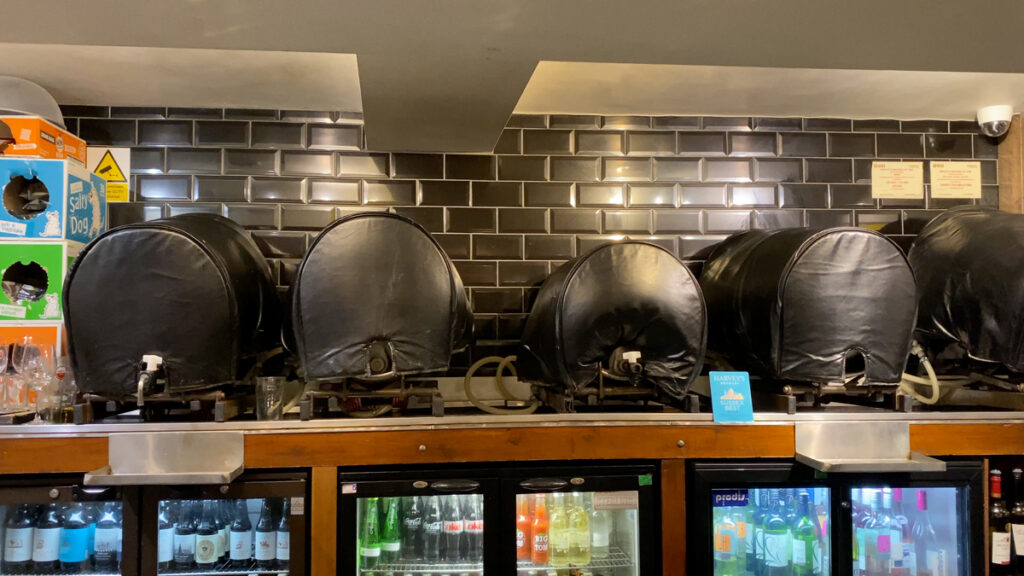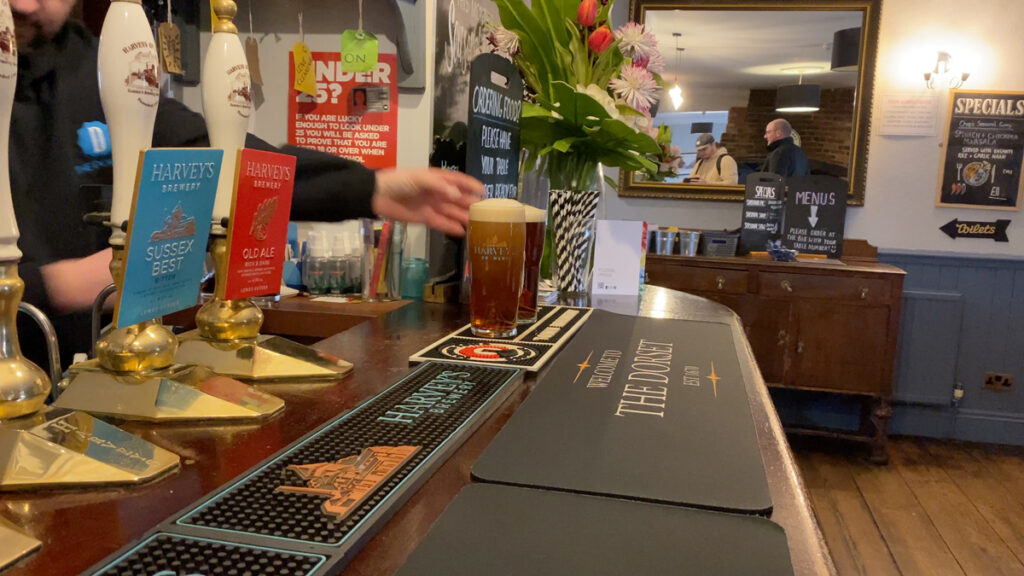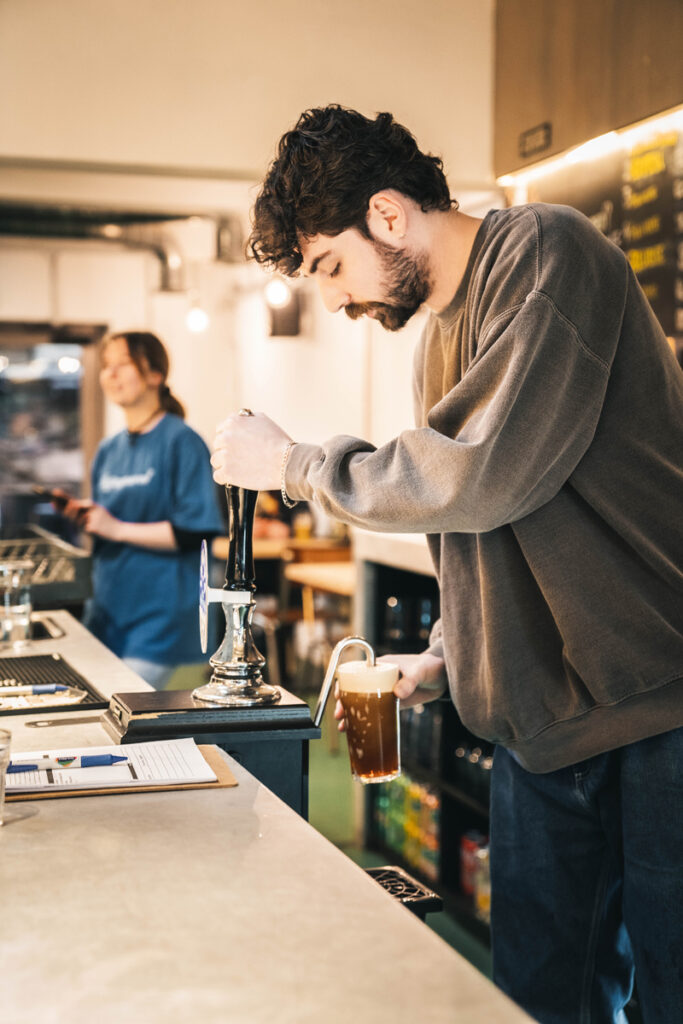In his latest blog post for Geterbrewed, our resident beer writer Matthew Curtis begins a three-part series on cask beer, from its history and its cultural impact, to the challenges it faces in today’s beer market. In this first instalment, he looks at how passion and enthusiasm for the category is the reason it still exists today.

For some drinkers, cask beer never went out of fashion. In fact, for those among us who understand that it’s perhaps the greatest way to condition and serve a beer ever devised, it’s not just something you drink and enjoy, it’s an obsession.
It’s because of the near cult-like status around this particular dispense method that it’s at once one of the most revered, yet also the most maligned methods of beer service anywhere in the world.
I’m often reminded of an old stereotype pushed in other beer drinking nations around the world (although in particular, Australia, for some reason) that the UK has this thing for “warm, flat” beer. And it’s true that cask beer – or real ale if you prefer to use the term designated for it by CAMRA, the Campaign for Real Ale – is served a little warmer than it would be via other dispense methods, such as the more commonly used keg. It’s also true that, in part due to it being conditioned for service at the point of dispense, not manufacture, that it typically has a softer, less abrasive texture than beers that have had their condition added via alternative methods, such as force carbonation.
But while it is served a few degrees warmer than say, a cold lager or stout, and doesn’t have soda-stream levels of fizzy carbon dioxide, to disparage it as warm and flat is woefully inaccurate. At its best, with a thick head of foam that forms rings of lace down the glass as you sip, each mouthful of beer rippling with condition, and just cool enough so that tiny beads of condensation form where your hand holds your pint, cask is perfection personified. A method of dispense designed in its entirety to compliment the drinking experience.

It is this reason that, for as many people who choose to disparage this method of serving beer, there are others who revere it. For example, ask nearly any American brewer how they feel about real ale, and they will positively coo about the magical nuances and subtleties it inherently possesses. They may add that they have attempted to replicate it in their own brewery, but for some reason it just never tastes as good as it does, when cared for and served properly in a good, British pub.
Therein lies the greatest problem that cask beer faces: it requires a certain degree of time, skill and care to serve properly, and then it must be sold quickly – usually within 72 hours or less – or the beer will begin to lose condition, and eventually spoil. If the person serving it isn’t correctly trained in cellar management, or people aren’t ordering enough of it when it is eventually tapped and served, then the experience it provides will be sub-standard.
With so many pubs in the UK serving cask ale at varying levels of quality, therein lies the reason why many of its detractors exist; it only takes one bad pint to put you off for life.
If you look at the data, cask beer is in big trouble. According to the Cask Report, produced by on-premise beer quality watchdog Cask Marque, overall sales (by volume) of cask beer have been in double digit decline since around 2018. And with the increasing production costs and wholesale prices of beer pushing this usually egalitarian product further towards a premium price point, it doesn’t look as though its sales struggles will see an end soon enough.
But if you put the sales data to one side and head down the pub (or, indeed, mingle amongst beer circles on social media) you will see that, anecdotally at least, there remains a tremendous enthusiasm for cask beer. Once thought to be out of fashion and tired, classic styles such as Bitter, Mild and Golden Ale are once again having a bit of a moment, finding favour with a younger generation of drinkers who perhaps realised during the lockdowns of 2020 and 2021, that the pub experience – and the beers you can only be served there – is impossible to replicate at home.
Cask beer becoming fashionable again is not just the result of the pandemic however, but perhaps a wider symptom that the heydey of US-inspired bold, strong, and expensive craft beer is coming to its inevitable end. It turns out that, here in the UK at least, we might have had things right about beer all along. We excel in producing tasty, yet easy-drinking, lower alcohol beers that can be enjoyed by the pint, in decent volumes – prolonging the amount of time you spend in the pub – and thus this remains central to British drinking culture. In discovering the beauty of real ale, a new wave of obsessives have been ushered into the cask fraternity, where they will likely remain for life.
What’s interesting about this, is that if you look at the recent history of cask beer then you will see a similar pattern emerging. While the history of beer and pub culture in the UK is incredibly nuanced and complex, the beer styles and pub experience we’re mostly familiar with today emerged after the end of the Second World War. Popular, lower alcohol styles such as bitter and mild gradually morphed into the more familiar guises they have today during this period, largely due to the rationing of ingredients like barley. Then, as pubs became spaces occupied largely by working class men, the rise of British pint culture emerged.
The popularity of the breweries producing these beers saw them make lots of money, and some grew to become very large. In fact during the sixties and seventies, the existence of hundreds of smaller, often family owned breweries in the UK was eradicated as they were acquired by a group of giant beer companies often referred to by beer historians as “The Big Six”. Not only were The Big Six keen on shutting down the competition, but they were also looking for cheaper ways to dispense beer, and to reduce costs at every opportunity. They began to push keg beer, and attempted to wipe real ale from the bar completely.
Thankfully, a group of four obsessives: Michael Hardman, Jim Makin, Bill Mellor and Graham Lees, decided to do something about this, and on a trip to Ireland in 1971, formed CAMRA. Over the ensuing years it would grow to become the largest consumer group in Europe, and successfully lobby for government legislation that has helped to preserve both the breweries that produced their beloved cask beer, and the pubs which served it. There were even some big celebrity endorsements, with Monty Python’s Terry Jones famously launching the 1977 Great British Beer Festival by pouring a pint of beer (produced by the brewery he then owned) over his head.
Like cask beer, CAMRA has been much maligned itself as it has aged, and been cast with (often unfortunate, and misplaced) stereotypes. The reality is that this grassroots group of activists is largely to thank for the fact that cask beer still exists in the UK at all. Beer has changed an awful lot since the organisation was founded over 50 years ago – perhaps most notably, the US craft brewing revolution (which has seen over 9000 breweries open in the United States within about three decades) has changed the face of beer forever.
And while craft beer did change the UK beer landscape too, it has perhaps also provided a new generation of obsessive drinkers with the opportunity to reflect on own home-grown drinking culture. Where does cask beer fit into the modern beer enthusiasts drinking vernacular? Should it be treated with the same respect and reverence as it was by the likes of CAMRA in the decades that went before?

Walk into any decent pub or bar these days and the beer selection available is far greater now than it likely ever has been — working out where cask beer fits into that is going to be key to its survival. Cask will almost certainly continue to be debated about, and argued over – even by those who claim to care for it deeply. In fact I believe this to be one of its strengths, as it’s demonstrative that people care. But to ensure people care about it, positive experiences need to be created, through good pubs that run good cellars, and sell through their stock in a timely manner, at a price most people can afford.
And, as much as it only takes one bad pint to potentially put someone off cask beer for life, it’s perhaps also worth considering that it only takes one sip from a beautifully conditioned pint of delicious real ale to instil that sense of enthusiasm that has carried it this far. The future of cask beer is in good hands, so long as it’s still turning a love for great beer into an obsession.
— Matthew Curtis
Geterbrewed are passionate about promoting the local beer industry; they supply ingredients as a one stop shop to brewers both for home use and for commercial breweries across the UK & Ireland